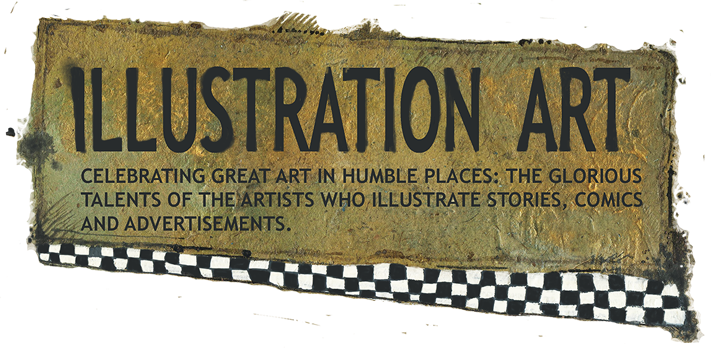"To live is to war with trolls" -- Ibsen
Illustrator Steve Brodner started drawing political cartoons for local Brooklyn newspapers at the young age of 17. Back then he was paid a whopping $10 per cartoon.
In the hopes of improving his lot, Brodner enrolled in New York's famed Cooper Union art school. Unfortunately, Cooper Union frowned upon his illustrative style of drawing. The school wanted students with the potential to amount to something someday, and they viewed Brodner's work as unsophisticated and uninteresting. His drawing teacher scolded him for exaggerating the models in life class, and gave him an F grade. The Dean summoned Brodner to his office and urged him to transfer to Brooklyn College, which might be more tolerant of Brodner's style.
Brodner refused to leave (in part because Cooper Union tuition was free and Brodner could not afford Brooklyn College). At the end of his first semester, Brodner's grade average was a paltry 2.1. If his average sank just .1 lower, Brodner could be thrown out of school. The Dean walked around to Brodner's teachers trying to persuade one of them to lower Brodner's grade so the Dean could expel him. Not one of them was willing to comply so Brodner received a temporary stay of execution.
In his second semester, Brodner struggled to raise his grades. At the same time, he learned about a nationwide cartooning competition on the theme of overpopulation. The judges in the contest included Al Hirschfeld, Al Jaffee and Roger Wilkins. Brodner entered the contest with a cartoon showing the earth evolving over the span of five sequential drawings, as humans multiplied, into a skull:
Brodner's cartoon won first prize, miraculously beating out established professionals such as Garry Trudeau and Charles Addams. The NewYork Times and the New York Post both wrote about Brodner's award. People magazine profiled him in its Guide to the Up and Coming. His drawing was featured on TV, on the Today Show and on the famous quiz show, To Tell the Truth.
The night of the award ceremony, the audience was filled with celebrities from television, the press and the arts. The Master of Ceremonies was famed cartoonist Milton Caniff. Hirschfeld and Jaffee participated, and even the loser Charles Addams showed up to see the young winner. Recalls Brodner, "It was a grand introduction to the world of published art."
 |
| The young Brodner receives his award, flanked by Al Hirschfeld |
But perhaps the biggest surprise in the audience was the President of Cooper Union who came up to the front so the school could share in the credit for the award. He wrapped his arm around Brodner's shoulder, shook his hand and congratulated him, declaring how proud Cooper Union was of its famous student.
After the award, Cooper Union arranged for Brodner to take a six-credit course of independent study, drawing political cartoons.
Over the next 40 years, Brodner earned fame as a leading caricaturist, author, film maker, professor, and political observer. In prominent publications such as Newsweek, Esquire, the New Yorker and Harpers, he made "pictures that tell the important story." No one has heard from Brodner's drawing teacher.
Thirty five years after he graduated, Cooper Union awarded Brodner its St. Gaudens Lifetime Achievement award, the school's highest honor bestowed upon an alumnus.


























.jpg)








.jpg)








.jpg)


.jpg)

.jpg)

